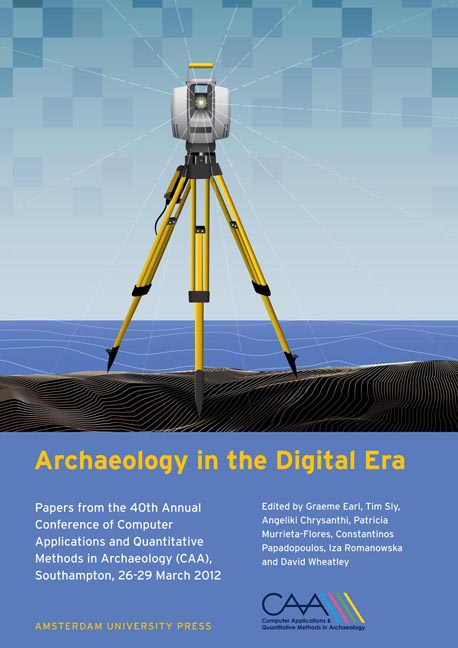 Archaeology in the Digital Era
Archaeology in the Digital Era Published online by Cambridge University Press: 16 February 2021
Abstract:
For many years the Laboratory of Photogrammetry of IUAV University has been experimenting instruments and methods for the photogrammetric and laser scanning survey in the archaeological field. The laboratory was born for the study of architecture, but it also found a logical application field in the survey of archaeological architecture, that is those ancient monuments of which we still have remarkable parts in elevation. The amphitheatre is one of the typologies we studied through several surveying campaigns. The surveys undertaken until now and the ones that we are still planning will also provide data to aliment a particularly fertile research project of our University concerning the shape of the amphitheatres. In the paper we will present the results of the researches conducted on the amphitheatres of Verona and Grumentum, with particular attention to the methodologies used and the new applications currently in progress using UAVs on some other amphitheatres.
Keywords:
Amphitheatre, Laser Scanner, Aerial Photogrammetry, UAV
Introduction
A natural instrument of gaining knowledge is measurement; it is an action that associates quantity information with quality information in order to define a shared and intersubjective knowledge of the real environment (Achille and Monti 2001,78-90).
Many of the numerous on-going and past research activities have had, and still have, the purpose of studying, exploring and developing the techniques for dimensional survey and 3D reconstruction of objects and surfaces. Special attention has been given to the metrological aspects of the problem, by comparing the “traditional” survey methods and more recent applications.
With the purpose of achieving the most accurate and reliable understanding of the works of art, we found the possibility of using optical technology for studying cultural objects, which were explored in recent years thanks to the progress made in the computing and optical electronics fields. In particular, we have witnessed the rapid development of 3D optical scanning technologies to understand the form of highly complex structures, a development that has confirmed its effectiveness as a method for analysing and conserving Cultural Heritage (Bitelli 2002; Peloso 2005). Also, in the archaeological field the use of these techniques is developing very fast, in spite of their costs. In fact, often archaeologists feel the need for a fast and non- invasive documentation of objects, artefacts and sites.
To save this book to your Kindle, first ensure [email protected] is added to your Approved Personal Document E-mail List under your Personal Document Settings on the Manage Your Content and Devices page of your Amazon account. Then enter the ‘name’ part of your Kindle email address below. Find out more about saving to your Kindle.
Note you can select to save to either the @free.kindle.com or @kindle.com variations. ‘@free.kindle.com’ emails are free but can only be saved to your device when it is connected to wi-fi. ‘@kindle.com’ emails can be delivered even when you are not connected to wi-fi, but note that service fees apply.
Find out more about the Kindle Personal Document Service.
To save content items to your account, please confirm that you agree to abide by our usage policies. If this is the first time you use this feature, you will be asked to authorise Cambridge Core to connect with your account. Find out more about saving content to Dropbox.
To save content items to your account, please confirm that you agree to abide by our usage policies. If this is the first time you use this feature, you will be asked to authorise Cambridge Core to connect with your account. Find out more about saving content to Google Drive.